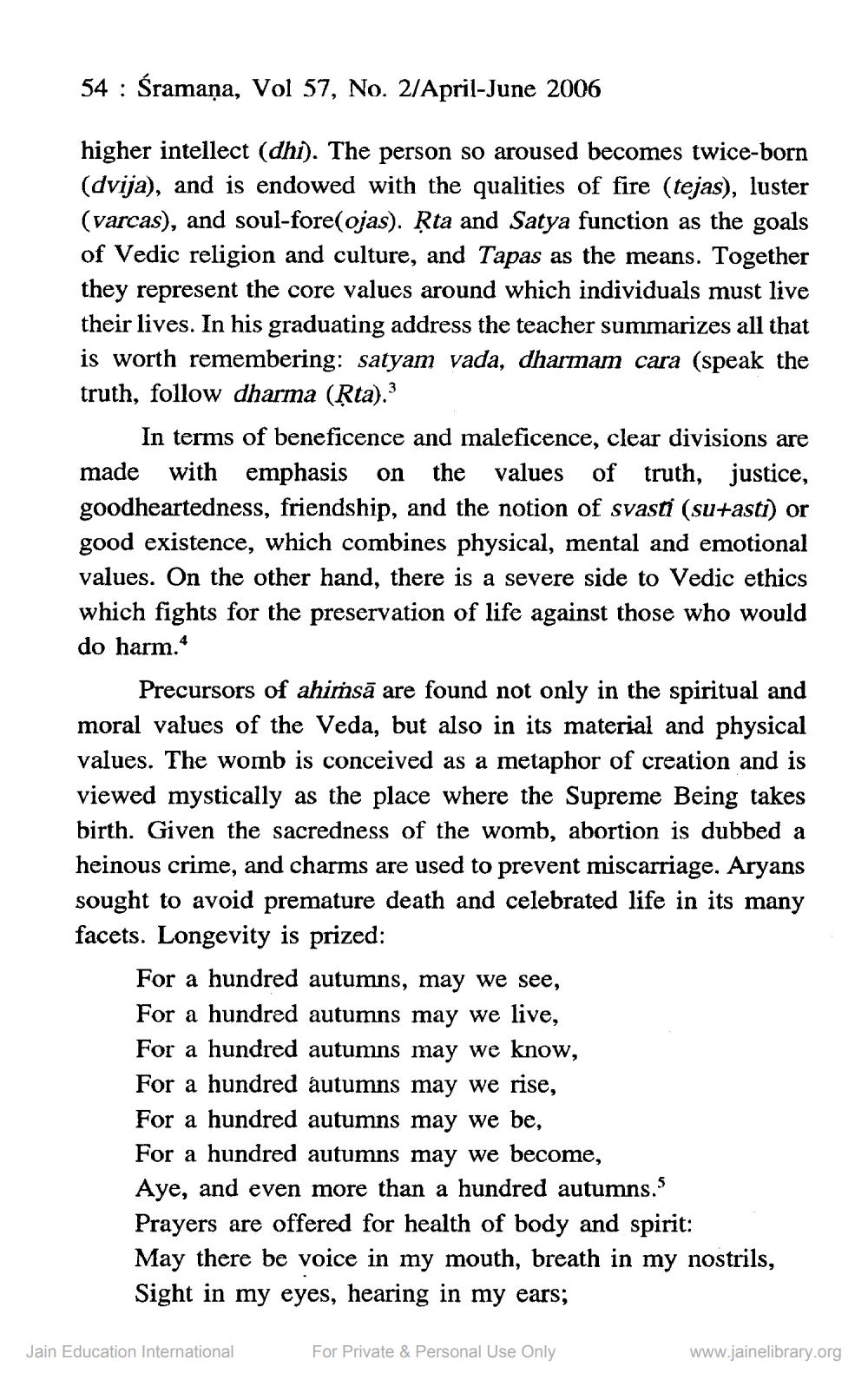________________
54 : Śramaņa, Vol 57, No. 2/April-June 2006
higher intellect (dhi). The person so aroused becomes twice-born (dvija), and is endowed with the qualities of fire (tejas), luster (varcas), and soul-fore(ojas). Řta and Satya function as the goals of Vedic religion and culture, and Tapas as the means. Together they represent the core values around which individuals must live their lives. In his graduating address the teacher summarizes all that is worth remembering: satyam vada, dharmam cara (speak the truth, follow dharma (Rta).
In terms of beneficence and maleficence, clear divisions are made with emphasis on the values of truth, justice, goodheartedness, friendship, and the notion of svasti (su+asti) or good existence, which combines physical, mental and emotional values. On the other hand, there is a severe side to Vedic ethics which fights for the preservation of life against those who would do harm.
Precursors of ahiṁsā are found not only in the spiritual and moral values of the Veda, but also in its material and physical values. The womb is conceived as a metaphor of creation and is viewed mystically as the place where the Supreme Being takes birth. Given the sacredness of the womb, abortion is dubbed a heinous crime, and charms are used to prevent miscarriage. Aryans sought to avoid premature death and celebrated life in its many facets. Longevity is prized:
For a hundred autumns, may we see, For a hundred autumns may we live, For a hundred autumns may we know, For a hundred autumns may we rise, For a hundred autumns may we be, For a hundred autumns may we become, Aye, and even more than a hundred autumns. Prayers are offered for health of body and spirit: May there be voice in my mouth, breath in my nostrils, Sight in my eyes, hearing in my ears;
Jain Education International
For Private & Personal Use Only
www.jainelibrary.org




